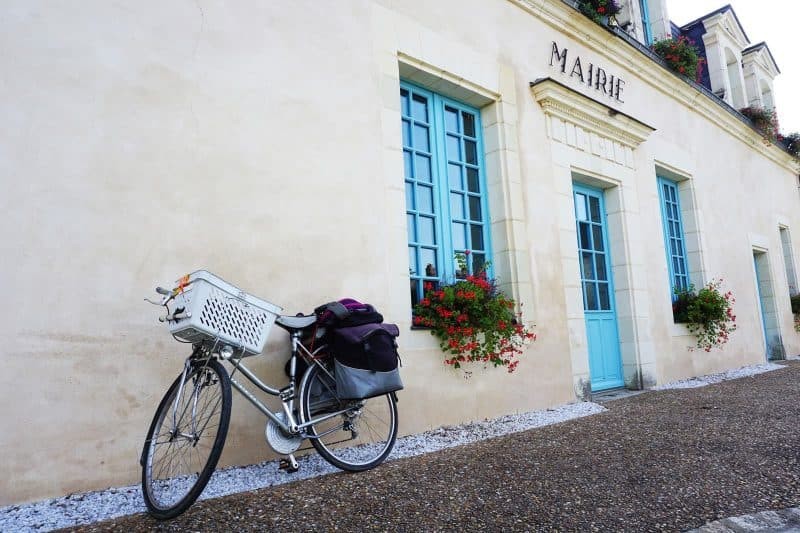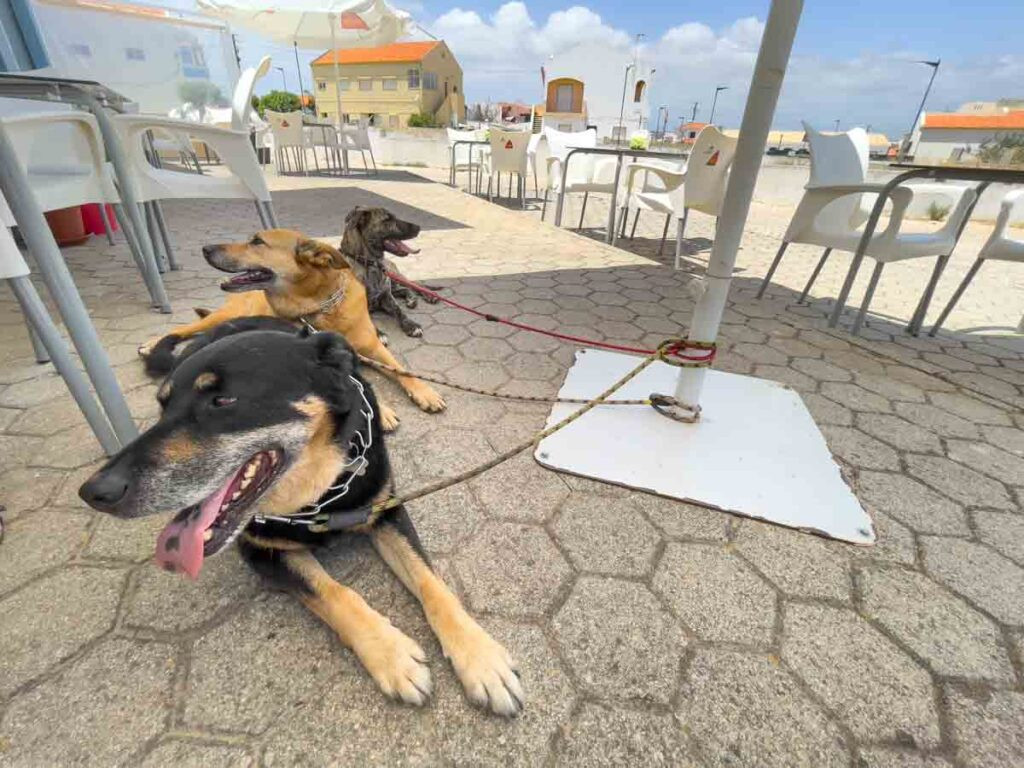Traveling Europe doesn’t have to break the bank. With smart planning and savvy choices, experiencing the rich history, vibrant culture, and stunning landscapes of Europe can be surprisingly affordable. SIXT.VN helps you discover tips and tricks to travel Europe on a budget, from affordable destinations to cost-saving strategies, making your dream trip a reality. Find secret travel hacks, explore off-the-beaten-path gems, and travel on a shoestring budget.
1. Master the Art of Slow Travel for Budget Europe
One of the golden rules of budget travel in Europe is to embrace slow travel. By lingering longer in each destination, you can unlock significant savings and experience the continent more authentically.
Instead of rushing through multiple cities in a whirlwind tour, consider spending several weeks or even months exploring a single region. According to research from the European Travel Commission in 2023, travelers who stay longer than 14 days in a destination spend an average of 30% less per day than those who stay for a week or less. This is due to the reduced transportation costs and the ability to take advantage of discounts on longer-term accommodation.
1.1. The Financial Perks of Extended Stays
When you extend your stay in a particular location, the initial costs, such as airfare, are spread out over a longer period, substantially reducing the daily expense.
Accommodation costs also decrease considerably with longer stays. Many guesthouses, hostels, and apartment rentals offer discounted weekly and monthly rates. For example, instead of paying $80 per night for a short-term rental, a monthly stay could bring the nightly rate down to $40 or less.
1.2. Immerse Yourself and Save
Slow travel allows you to immerse yourself in the local culture, uncover hidden gems, and participate in cost-effective activities. Rather than ticking off a list of must-see attractions, you can explore local markets, relax in parks, and enjoy free cultural events.
Here are some ways to save money while traveling slowly:
- Cook your meals: Buying groceries and preparing your food can significantly reduce dining expenses.
- Use public transportation: Take advantage of local buses, trams, and trains, which are generally much cheaper than taxis or rental cars.
- Take advantage of free activities: Many European cities offer free walking tours, museum days, and public parks.
- Befriend locals: Locals can offer invaluable tips on affordable restaurants, hidden attractions, and budget-friendly transportation options.
2. Slash Transit Costs: Navigate Europe Affordably
Transportation expenses can quickly inflate your travel budget. But by employing smart strategies and choosing the right modes of transport, you can significantly reduce these costs.
2.1. Walk and Cycle to Victory
Whenever feasible, opt for walking or cycling as your primary mode of transportation. Not only is it budget-friendly, but it also offers an immersive experience, allowing you to discover hidden gems and local hotspots.
Walking or cycling for short distances allows you to save on public transport fees. Plus, it’s an excellent way to stay fit while exploring new places.
 Cycling across France is a perfect way to immerse yourself in the landscape and save money on transportation.
Cycling across France is a perfect way to immerse yourself in the landscape and save money on transportation.
2.2. Train Travel: Unlocking Affordable Rail Adventures
For longer distances, train travel can be a cost-effective and convenient option, especially if you plan strategically.
Eurail passes are designed for tourists and provide unlimited travel within a specific region or across multiple countries for a set period. If you plan to travel extensively by train, a Eurail pass can save you a considerable amount of money compared to purchasing individual tickets.
When booking train tickets, be flexible with your travel dates and times. Off-peak hours and less popular routes often come with lower fares. According to a 2022 report by Rail Europe, booking train tickets 2-3 months in advance can save you up to 40% compared to last-minute bookings.
2.3. Buses: The Budget-Friendly Backbone of European Travel
Bus travel is often the most economical way to traverse Europe, especially for longer distances. Companies like FlixBus and BlaBlaCar Bus offer extensive networks, connecting major cities and smaller towns at very competitive prices.
One-way fares can be as low as 5 euros, and booking in advance can unlock even greater savings. FlixBus utilizes solar and wind power energy to operate their trains and buses, so your carbon footprint will also be considerably lower.
2.4. Flights: Conquering the Skies on a Budget
Budget airlines like Ryanair and EasyJet offer incredibly affordable flights across Europe. By comparing prices on sites like Skyscanner and Momondo, you can snag amazing deals and hop between countries without breaking the bank.
To maximize savings on flights, consider these tips:
- Fly during off-peak seasons: Flights are generally cheaper during the shoulder seasons (April-May and September-October) and winter months (November-March, excluding holidays).
- Be flexible with your destination: Instead of focusing on a specific city, search for the cheapest airport to fly into and then travel to your desired destination by train or bus.
- Travel light: Budget airlines often charge extra fees for checked baggage, so pack efficiently and bring only a carry-on if possible.
2.5. Embrace Carpooling: Share the Ride and the Costs
Carpooling services like BlaBlaCar provide a unique opportunity to share rides with locals and fellow travelers, offering a cost-effective and social way to get around.
ID checks and a review/profile system ensure safety, while the spontaneous nature of carpooling allows you to connect with new people and discover hidden gems along the way.
3. Unlock Affordable Accommodation in Europe
Accommodation is often one of the most significant expenses for travelers. But with some creativity and resourcefulness, you can find comfortable and budget-friendly lodging options throughout Europe.
3.1. Hostels: Social Hubs for Budget Travelers
Hostels are a great way to save money and meet fellow travelers. Most hostels offer dormitory-style rooms with shared facilities. They often organize social events and tours, making them ideal for solo travelers or those looking to connect with others.
Websites like Hostelworld provide extensive listings, reviews, and photos, allowing you to find the perfect hostel for your needs.
3.2. Airbnb: Apartments, Rooms, and Unique Stays
Airbnb offers a wide range of accommodation options, from private rooms in apartments to entire houses. This allows you to find lodging that fits your budget and preferences.
When booking an Airbnb, consider these tips:
- Look for discounts: Many hosts offer discounts for weekly or monthly stays.
- Read reviews: Pay close attention to reviews from previous guests to get an accurate sense of the property and host.
- Consider the location: Choose a location that is well-connected to public transportation and close to attractions.
3.3. Worldpackers: Exchange Skills for Accommodation
Worldpackers is a global platform that connects travelers with hosts who offer free accommodation in exchange for volunteer work. You can find opportunities to teach English in Southeast Asia, learn how to make wine in Italy, or help with social media for a hostel in Australia.
Accommodations can range from a tent or van to hostel rooms or a private guesthouse. Work exchanges are a great way to immerse yourself in the local culture, make new friends, and save money.
3.4. TrustedHousesitters: Pet-Sitting Your Way to Free Stays
TrustedHousesitters is a platform that connects homeowners with travelers who are willing to look after their homes and pets in exchange for free accommodation.
With headquarters in the UK, Europe has the most house-sitting options compared to anywhere else in the world. Stays can be as short as 1 night and as long as a year or more. It’s an annual subscription service, but for $120-$155 USD, it pays for itself in one night.
It can be an incredibly cost-effective way to see local life in towns you might not have otherwise adventured to. Plus, you get to look after cute animals.
 Caring for animals through TrustedHousesitters is a delightful way to secure free accommodation and travel Europe on a budget.
Caring for animals through TrustedHousesitters is a delightful way to secure free accommodation and travel Europe on a budget.
4. Health on the Road: Affordable Healthcare in Europe
Healthcare costs are often lower in Europe than in the United States. This can be a significant advantage for travelers, especially those who plan to stay for an extended period.
4.1. Travel Insurance: Peace of Mind on a Budget
Travel insurance is essential for any trip, but it’s particularly important when traveling on a budget. It can protect you from unexpected medical expenses, trip cancellations, and lost or stolen belongings.
According to a 2023 survey by the US Travel Insurance Association, the average cost of a travel insurance policy is between 5% and 10% of the total trip cost. While it may seem like an additional expense, it can save you thousands of dollars in the event of an emergency.
4.2. Public Healthcare Systems: Accessing Affordable Care
Many European countries have public healthcare systems that offer affordable or even free medical care to residents and visitors.
While you may need to pay out-of-pocket for certain services, the costs are generally much lower than in the United States. For example, a visit to a general practitioner in Spain might cost between 40 and 60 euros, while a similar visit in the United States could cost hundreds of dollars.
5. Travel Styles: Solo vs. With a Partner: Sharing the Costs, Doubling the Fun
Traveling solo or with a partner can impact your budget and lifestyle.
While traveling solo offers freedom and flexibility, traveling with a partner can significantly reduce accommodation costs. Sharing the rent allows you to afford apartments that are a little more expensive and have a little more space, light, and location flexibility.
6. Exploring Europe on a Budget: East vs. West
The cost of travel in Europe can vary greatly depending on the region you choose to visit. Eastern Europe generally offers a more affordable travel experience than Western Europe.
6.1. Eastern Europe: Budget-Friendly Gems
Countries like Romania, Bulgaria, and Croatia are still developing, which means more annoying infrastructure snafus but also significant cost savings.
A month in Mostar, Bosnia, and Herzegovina, in a lovely two-bedroom apartment on the edge of the old town, cost me less than $1,300. My personal cheapest month in Europe was in Konjic, Bosnia, and Herzegovina, where I spent $1,157 for a month.
6.2. Western Europe: Making the Most of Your Budget
While Western Europe tends to be more expensive than Eastern Europe, it’s still possible to travel on a budget.
My cheapest month in a Western European country (in Taormina, Sicily, Italy, for $1,364) was actually cheaper than my most expensive month in an Eastern country (across the Adriatic in Dubrovnik, Croatia, for $1,443).
The most affordable countries in Western Europe, in my experience, are Slovenia, Spain, Italy, and Belgium.
7. Pet-Friendly Travel: Europe on a Budget with Your Furry Friend
Traveling with a pet can add to your expenses, but it doesn’t have to break the bank.
European vet care is almost always cheaper than the US equivalent. When Luna had pancreatitis in Croatia, her full vet bills for multiple tests, x-rays, blood tests, sedation, and pills came in at about $150. By contrast, just a blood test (to check on her pancreas later) in Colorado was upwards of $200.
Most airlines that allow small dogs charge $50 to $100 for an in-cabin dog on flights within Europe. The good news is that most trains charge a small fee or even no fee if the dog is in a carrier.
 Traveling with a dog like Luna can be a fun and fulfilling experience, and with careful planning, it can be done affordably.
Traveling with a dog like Luna can be a fun and fulfilling experience, and with careful planning, it can be done affordably.
8. Timing is Everything: When to Visit Europe for the Best Deals
The time of year you visit Europe can significantly impact your budget.
8.1. Shoulder Seasons: The Sweet Spot for Budget Travelers
To get the best deals, you might want to change your expectations around a summer excursion.
If you want cheaper prices, fewer tourists, and the ability to take public transport without suffocating from humidity or frigidly cold temperatures, I suggest traveling to Europe August-October or March-May (basically before and after summer).
8.2. Winter Months: Cozy Getaways on a Shoestring
The winter months are sometimes harsh, but if you’re vibing a cozier getaway, not wanting to see any of the main attractions or attend famous summer festivals, then by all means, Europe is a winter wonderland with plenty of snow-based activities. These will also be the cheapest months to travel (except holidays).
9. Discover Hidden Gems and Off-the-Beaten-Path Destinations
Escape the tourist traps and discover the authentic charm of Europe by venturing off the beaten path. Seek out lesser-known destinations, where you’ll find lower prices, fewer crowds, and a more genuine travel experience.
9.1. Unearth Underrated Cities and Regions
Instead of flocking to Paris, Rome, or London, consider exploring cities like:
- Valencia, Spain: A vibrant coastal city with stunning architecture, delicious cuisine, and a relaxed atmosphere.
- Ljubljana, Slovenia: A charming capital city with a picturesque river, a hilltop castle, and a thriving cultural scene.
- Porto, Portugal: A historic port city with colorful buildings, renowned wine cellars, and a lively nightlife.
- Krakow, Poland: A captivating city with a rich history, a stunning Old Town, and a poignant Jewish Quarter.
9.2. Explore Rural Landscapes and Natural Wonders
Escape the urban hustle and immerse yourself in the natural beauty of Europe by exploring its picturesque countryside, majestic mountains, and stunning coastlines.
10. Maximize Your Travel Budget with SIXT.VN
Planning a budget-friendly trip to Europe can be overwhelming. SIXT.VN can help you with tailored travel itineraries, airport transfer service, hotel booking, and tours.
10.1. Tailored Travel Itineraries
SIXT.VN creates itineraries that match your interests and budget, ensuring you experience the best of Europe without overspending.
10.2. Convenient Airport Transfer Service
SIXT.VN offers reliable airport transfer services. Start your trip stress-free with pre-booked transportation, avoiding taxi queues and navigating public transport with luggage.
10.3. Hotel Booking
SIXT.VN helps you find budget-friendly accommodations that suit your needs.
10.4. Tours
Discover local culture and landmarks with SIXT.VN’s curated tours.
Don’t let budget constraints hold you back from exploring Europe. With smart planning, savvy choices, and the resources available at SIXT.VN, you can embark on an unforgettable adventure without breaking the bank.
Contact SIXT.VN today to start planning your budget-friendly European adventure!
Address: 260 Cau Giay, Hanoi, Vietnam
Hotline/Whatsapp: +84 986 244 358
Website: SIXT.VN
 Discovering local culture and iconic landmarks is easy and affordable with SIXT.VN's carefully selected tour options.
Discovering local culture and iconic landmarks is easy and affordable with SIXT.VN's carefully selected tour options.
FAQ: Your Questions About Affordable European Travel Answered
1. What is the cheapest month to travel to Europe?
The cheapest months to travel to Europe are generally November through March, excluding the Christmas and New Year holiday periods. During these months, you can find lower prices on flights, accommodations, and tours.
2. How much money do I need for 2 weeks in Europe?
The amount of money you need for 2 weeks in Europe depends on your travel style and destination. If you’re on a tight budget and stick to Eastern Europe, you could get by on as little as $700-$1000. If you prefer Western Europe and a more comfortable travel style, you should budget around $1400-$2000.
3. Is it cheaper to travel Europe by train or bus?
Bus travel is generally cheaper than train travel in Europe. However, train travel can be faster and more comfortable, especially for longer distances. Consider your priorities and budget when choosing between the two.
4. How can I find affordable accommodation in Europe?
There are several ways to find affordable accommodation in Europe, including staying in hostels, using Airbnb, participating in work exchanges through platforms like Worldpackers, and house-sitting through TrustedHousesitters.
5. What are the best budget airlines in Europe?
Some of the best budget airlines in Europe include Ryanair, EasyJet, and Wizz Air. These airlines offer affordable flights across Europe, but be sure to check for additional fees for checked baggage and other services.
6. Is it possible to travel Europe on $50 a day?
Yes, it is possible to travel Europe on $50 a day, especially if you stick to Eastern Europe, travel during the off-season, stay in hostels, cook your meals, and take advantage of free activities.
7. What are some free things to do in Europe?
Many European cities offer free walking tours, museum days, and public parks. You can also visit churches and cathedrals, explore local markets, and attend free cultural events.
8. How can I save money on food in Europe?
To save money on food in Europe, cook your meals whenever possible, shop at local markets, and eat at local restaurants and cafes instead of tourist traps. You can also take advantage of free breakfast at your hostel or hotel.
9. What is the best way to get around Europe on a budget?
The best way to get around Europe on a budget is to use a combination of walking, cycling, public transportation, buses, and budget airlines.
10. Are there any hidden costs I should be aware of when traveling in Europe?
Some hidden costs to be aware of when traveling in Europe include bank fees, tourist taxes, and roaming charges. To avoid these costs, use a credit card with no foreign transaction fees, ask about tourist taxes before booking accommodation, and purchase a local SIM card or use an eSIM for data.



